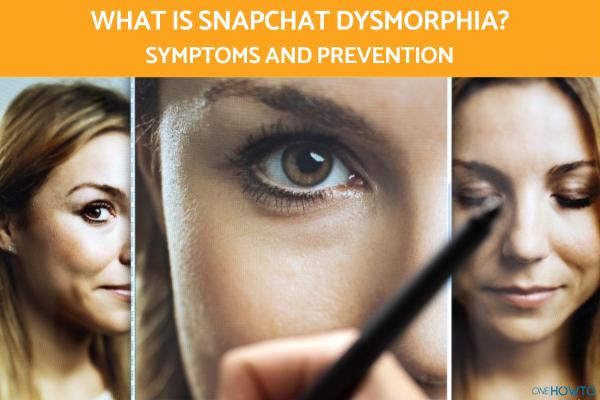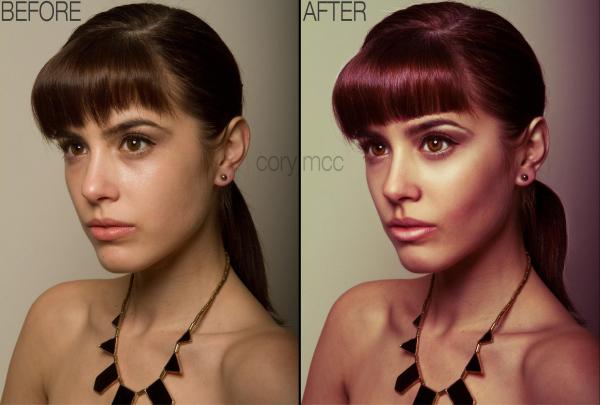What Is Snapchat Dysmorphia?


The recent rise of social media platforms and applications has many societal effects we are not yet able to fully understand. Repercussions of spending all our time online looking at what others do and think affect politics, family and individual thought. An argument has arisen about whether these repercussions are a net benefit or net loss to humanity. Evidence for the latter can be seen in Snapchat dysmorphia, a proposed phenomenon that affects how we see our physical selves. At oneHOWTO, we ask what is Snapchat dysmorphia? In addition to discovering what it is, we find out how to protect ourselves from its negative impact.
What is Snapchat dysmorphia?
Body dysmorphia or body dysmorphic disorder (BDD) is a mental condition whereby a person becomes obsessed with perceived flaws in their physical appearance, whether real or imagined. The repercussions this has on a person's psyche can be detrimental, potentially resulting in anxiety, disordered eating, social isolation, self harm or even suicide.
The reasons for body dysmorphia are varied and distinct to the individual. Some may have had an upbringing which harmed their self-worth or they have had traumatic experiences which resulted in distortions of how they view themselves.
Snapchat dysmorphia is a form of body dysmorphia where the origin or greatest influence is found in social media. Snapchat became famous for its use of filters, allowing users to amend their photos or videos so their appearance changes. Often this is for fun, but it is also a way to make ‘improvements’ to our physical appearance. It can change our facial features and other body parts to conform to an idealized image of beauty.
For people affected by Snapchat dysmorphia, they feel a strong desire to change their actual appearance so that it more closely resembles the images they see when they use a filter. Such filters are not unique to Snapchat and can be found on other platforms such as Instagram and TikTok. Common amendments include thinning of the nose, whitening of teeth, smoothing of skin or even changing the basic proportions of the face.
Visual alterations are extremely accessible and presented as an ‘enhanced’ version of the user. This can create a disconnect between how users see themselves on social media and how they look in real life. This dissonance can trigger ongoing dissatisfaction with their appearance. In a growing amount of cases, people are seeking out surgical or other cosmetic procedures to mimic digital versions of themselves.

How Snapchat dysmorphia affects you
We have already explained the basic definition of Snapchat dysmorphia, but it is important to understand how this phenomenon can affect individuals. Some of these may be limited to our own personal feelings, especially as they related to self-worth. However, there are also practical symptoms of Snapchat syndrome which can have detrimental effects on our well-being.
To better understand this condition, we look at the signs of Snapchat dysmorphia:
- Low self-esteem: filters present an idealized version of the face. When compared to reality, they can make a person feel that they are not attractive enough. This can challenge their self-worth, especially when compared with the millions of seemingly happy and apparently beautiful people on social media platforms.
- Appearance obsession: the ability to change your appearance with a few taps on the screen can lead to an obsession with how you look, both online and in real life. This can lead to people spending hours editing their photos before posting them or avoiding uploading unfiltered images.
- Seeking plastic surgery: some plastic surgeons have reported an increase in requests for procedures based on the effects that filters offer. People are seeking operations such as rhinoplasties, botox injections or dermal fillers[1]. This can be a clear sign that dissatisfaction with one's appearance has reached worrying levels. Since these procedures are expensive, paying for them can cause financial problems.
- Anxiety and social isolation: Snapchat dysmorphia can trigger mental health issues such as social anxiety. Some people may avoid face-to-face encounters or social situations because they fear that others will perceive them as less attractive than in their edited photos.
- Harmful practices: obsession with self-image engendered by Snapchat dysmorphia can lead to behavioral disorders such as disordered eating (e.g. bulimia or anorexia), exercise obsession or even self-harm. In fact, body dysmorphia can influence suicidal thoughts in some individuals. These can be exacerbated when people don't have the means to carry out expensive cosmetic procedures.
As we can see, individuals affected by Snapchat dysmorphia have distorted senses of self which can have seriously negative impacts on their mental well-being. It can also affect their financial, social and physical well-being.
The impact of Snapchat dysmorphia extends beyond the individual. Even if you do not think you are being affected, the beauty standards which these filters promote can have wide-ranging societal impacts. They tend to promote Eurocentric beauty standards by lightening skin, thinning noses and removing roundness. These can perpetuate harmful colorism and even influence internalized racism.
Discover how to delete friends on Snapchat with our related article.

How to prevent Snapchat dysmorphia
The best way to protect yourself against the negative effects of Snapchat dysmorphia is prevention. This will involve greater self-awareness, as well as promoting social safeguards to be more aware of the negative effects social media can provide. For the individual, we will need to take conscious steps to improve our relationship with our body and learn how to use social media in a healthy way:
- Limit your use of filters: while filters can be fun to use, it's important to limit their use and remember that they are not realistic representations of your appearance. Try to upload unfiltered photos and accept yourself as you are in natural images.
- Appreciate your body: instead of focusing on what you don't like about your appearance, try to focus on what you love about your physical self.
- Talk to a professional if necessary: if you feel that dissatisfaction with your appearance is affecting your mental well-being, consider speaking to a therapist or psychologist. These professionals can help you manage negative thoughts about your body image and develop stronger self-esteem.
- Follow accounts that promote self-acceptance: social media can be a toxic space if you only follow accounts that promote unattainable beauty ideals. Look for profiles that promote body diversity, self-acceptance and body positivity. This will help you develop a more realistic and healthy view of beauty.
- Set healthy boundaries around social media use: excessive social media use can contribute to Snapchat dysmorphia.
Now that you know what Snapchat dysmorphia is and how it affects you, you may also be interested in other ways to protect yourself online with our article on how to block someone on Telegram and how to find out who visits my Facebook profile.
This article is merely informative, oneHOWTO does not have the authority to prescribe any medical treatments or create a diagnosis. We invite you to visit your doctor if you have any type of condition or pain.
If you want to read similar articles to What Is Snapchat Dysmorphia?, we recommend you visit our Mental health category.
1. Ateq, K., Alhajji, M., & Alhusseini, N. (2024). The association between use of social media and the development of body dysmorphic disorder and attitudes toward cosmetic surgeries: a national survey. Frontiers in public health, 12, 1324092.
https://doi.org/10.3389/fpubh.2024.1324092






